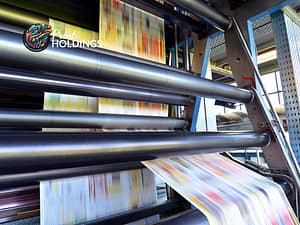The foundation of a safe workplace lies in the understanding and implementation of effective safety practices, prominently including the use of Personal Protective Equipment (PPE). PPE is vital in minimizing exposure to hazards that cause serious workplace injuries and illnesses.
The Role of Personal Protective Equipment (PPE) in Ensuring Worker Safety
Personal Protective Equipment, ranging from gloves and goggles to safety shirts and safety helmets, serves as the first line of defense against workplace hazards. By creating a barrier between the worker and potential risks, PPE significantly reduces the chance of injury, ensuring that employees can perform their duties safely and effectively.
Overview of Key PPE: Safety Shirts and Safety Helmets
Among the vast array of PPE, safety shirts and helmets stand out for their importance in numerous industries. Safety shirts, often high-visibility, ensure that workers are easily seen in various environments, reducing the risk of accidents. Safety helmets protect against head injuries from falling objects, impacts, and other hazards, making them indispensable on construction sites and in many manufacturing settings.
The Significance of Safety Shirts in the Workplace
Safety shirts are more than just a uniform; they are a critical safety tool in environments where visibility is paramount.
Understanding the Protective Features of Safety Shirts
Safety shirts are designed with bright colors and reflective materials, making workers visible even in low light conditions. This visibility is crucial for preventing accidents, especially near moving vehicles or in busy work areas.
Compliance and Standards for Safety Shirts
Compliance with standards such as ANSI/ISEA 107 for high-visibility clothing is vital. These standards ensure that safety shirts meet specific visibility requirements, providing consistent protection for workers across industries.
Proper Usage and Maintenance of Safety Shirts
To maintain their protective qualities, safety shirts should be worn correctly and kept in good condition. Regular cleaning according to manufacturer guidelines, inspection for damage, and timely replacement are all essential practices for ensuring ongoing safety.
The Critical Role of Safety Helmets
Safety helmets are indispensable in protecting workers from head injuries, one of the most serious risks in many work environments.
How Safety Helmets Protect Workers
By absorbing impact energy and providing a barrier against sharp objects, safety helmets significantly reduce the risk of traumatic brain injuries, skull fractures, and scalp wounds. Their design includes a hard outer shell and a shock-absorbing lining, which together provide comprehensive head protection.
Meeting Safety Helmet Standards and Regulations
Safety helmets must comply with standards such as ANSI Z89.1 in the United States or EN 397 in Europe, which specify requirements for impact and penetration resistance, strap strength, and other safety features. Compliance ensures that helmets offer reliable protection.
Care and Maintenance of Safety Helmets
Proper care extends the life and effectiveness of safety helmets. This includes regular cleaning, inspection for cracks or damage, and replacing helmets after a significant impact or according to the manufacturer’s lifespan recommendation. Proper storage away from direct sunlight and chemicals also helps preserve their protective properties.
Combining Safety Shirts and Helmets with Other Safety Gear
In hazardous work environments, the coordinated use of multiple forms of personal protective equipment (PPE) is essential for providing comprehensive protection to employees.
Integrating Safety Shirts and Helmets into a Comprehensive PPE Program
A well-rounded PPE program incorporates safety shirts and helmets as part of a larger ensemble that may include gloves, eye protection, earplugs, and respirators, depending on the nature of the work. This integration ensures that employees are protected from a wide array of potential hazards, from head injuries to exposure to harmful substances.
The Importance of Using Complete Safety Gear in Hazardous Environments
In environments where risks are multi-faceted, neglecting any aspect of PPE can lead to vulnerabilities. For instance, wearing a safety helmet without high-visibility shirts in a busy construction site can still put workers at risk of being struck by vehicles. Therefore, a complete set of safety gear tailored to the specific hazards of the workplace is crucial.
Training Employees on the Importance of Safety Gear
Effective safety gear use requires proper training and awareness among all employees, ensuring that they understand not just how to wear PPE, but also why it’s necessary.
Developing Effective Safety Training Programs
Safety training programs should cover the types of PPE required, correct usage and maintenance, and the specific hazards they protect against. These programs need to be comprehensive yet understandable, making sure that all employees, regardless of their prior knowledge or experience, can follow along.
Engaging and Informative Methods to Educate Employees on PPE Use
To enhance engagement and retention of safety information, employers can use interactive methods such as hands-on demonstrations, virtual reality simulations, and group discussions. These methods help in reinforcing the practical aspects of PPE use in a memorable way.
Monitoring and Enforcing PPE Compliance in the Workplace
Ongoing monitoring and enforcement of PPE policies are vital to maintaining a safe work environment. This can be achieved through regular safety audits, spot checks, and by establishing clear consequences for non-compliance, balanced with positive reinforcement for adherence to safety protocols.
Creating a Safety-First Culture
A safety-first culture is one where every member of the organization, from top management to new hires, prioritizes safety above all else in their day-to-day operations.
The Role of Management in Promoting Safety Gear Compliance
Leadership plays a crucial role in promoting a culture of safety. By consistently wearing PPE themselves, participating in safety training, and openly communicating the importance of safety gear, managers set a standard and expectation for everyone in the organization.
Incentivizing Proper Safety Gear Usage Among Employees
Incentive programs that reward proper safety gear usage can significantly enhance compliance. Recognition, rewards, or even simple acknowledgments can motivate employees to consistently adhere to safety practices.
The Impact of a Safety-First Culture on Workplace Incidents
Organizations that have successfully ingrained a safety-first culture often report lower rates of workplace incidents and injuries. Sharing these success stories within the organization can reinforce the value of safety gear and protocols, encouraging continued vigilance and compliance.
Addressing Common Concerns and Questions About PPE
Personal Protective Equipment is crucial for workplace safety, yet misconceptions and challenges can hinder its effective use.
Tackling Misconceptions About Safety Gear Use
One common misconception is that safety gear is uncomfortable and not always necessary. However, advancements in materials and design have significantly improved comfort without compromising protection. Educating employees on the direct benefits of PPE and the potential risks of non-compliance is crucial for overcoming these misconceptions.
Providing Solutions to Common Safety Gear Challenges
Challenges such as improper fit, wear and tear, and limited awareness of the right gear for specific tasks can reduce the effectiveness of PPE. Solutions include regular fit testing, maintenance checks, and comprehensive training on selecting appropriate gear for different hazards.
Future Trends in Safety Gear: Innovations and Improvements
The future of safety gear is shaped by technological advancements and a growing emphasis on ergonomics and user compliance.
Upcoming Technologies in Safety Shirts and Helmets
Emerging technologies like wearable sensors in safety shirts and augmented reality (AR) features in helmets are set to enhance worker safety by providing real-time data on environmental hazards and improving situational awareness.
How Future Innovations Can Enhance Worker Safety
These innovations promise to make safety gear more effective by actively preventing accidents and ensuring immediate response to potential dangers. Moreover, they aim to increase wearer comfort and compliance, further reducing the risk of injury.
Conclusion
The importance of safety gear, particularly safety shirts and helmets, cannot be overstated. They are fundamental components of workplace safety, protecting employees from numerous hazards.
Recap of the Importance of Safety Shirts and Helmets
Safety shirts and helmets are indispensable for ensuring visibility and protecting against head injuries, respectively. Their role in safeguarding workers, especially in environments with high risks of impact, falls, and visibility-related accidents, underscores the necessity of their use.
The Ongoing Commitment to Employee Safety Through Education and Compliance
Maintaining a safe workplace requires an ongoing commitment to safety gear education and compliance. By continually addressing misconceptions, embracing technological advancements, and fostering a culture of safety, employers can significantly mitigate workplace hazards. The ultimate goal is to ensure that every employee returns home safely each day, making the investment in quality safety gear and education well worth the effort.










